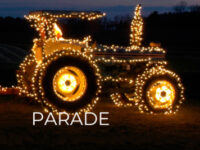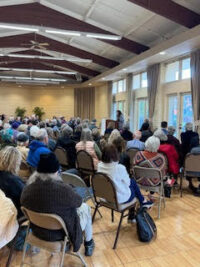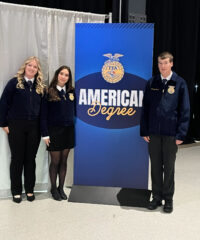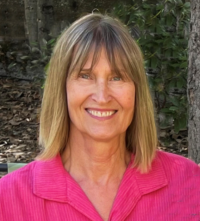The Sonoma City Council took a major step at its meeting Wednesday night to allow a Christmas creche to be displayed in the Sonoma Plaza during the holidays, a move that represents a dramatic reversal of a policy decision that had divided this community 17 years ago. After a lengthy debate and public hearing and without a formal vote, the council directed staff to develop a policy that would allow placement of religious symbols in the Plaza while at the same time ensuring it would in no way indicate the endorsement by the city of a particular religion or sect.
The change was supported by four of the five council members. Mayor Stanley Cohen opposed it on the grounds that the city was potentially opening itself up to expensive legal problems down the road if the policy was challenged in court. In general the policy will allow all religious groups and others to have displays in the plaza as long as their location, among other things, does not suggest endorsement by the city. The council will have to devise a method to decide, given the limitations of space in the Plaza, how many groups can set up displays and how they are to be selected.
The proposed new policy was offered by council member August Sebastiani, who said he sees the issue as one of free speech and not of religion. He also noted the survey last fall paid for by his father, former Assemblyman Don Sebastiani, that shows 72% of those responding believed “religious groups should be allowed to place a religious display (at the Plaza) during the Holiday season.”
Almost 20 people spoke during public comment on the item, many opposed and many in favor. David McCracken, a retired minister in Sonoma, objected to returning the creche to the Plaza, saying that he would hate to see the return of an issue that had raised controversy in 1990. “I don’t want to go through this whole thing again,” he said.
However, Thomas Keaney of the Sonoma Knights of Columbus, who said the city staff had refused to accept his group’s application to display a creche this year, argued that the nativity scene had been a holiday fixture almost since its founding. He suggested that in its earlier decision the council had bowed “to ugly threats from those who would divide this valley.”
In 1990, following a U.S. Supreme Court decision the previous year, the council voted to ban the use of the Plaza for religious displays during the holidays. The nation’s highest court ruled that the Constitution did not permit a crèche in a Pennsylvania county courthouse because it suggested a governmental entity endorsed Christianity. At the same time the court found permissible the display of a large Hanukkah menorah nearby because it was beside a large Christmas tree and thereby did not imply the endorsement of any one particular religious preference by the county.
By prohibiting the crèche in 1990, the council averted any possible court challenges to the display, something which many thought was certain to occur particularly from the American Civil Liberties Union. Making the matter moot in any case was the decision by the Sonoma Valley Ministerial Association to move the crèche from the Plaza to the First Congregational Church at 252 West Spain St., where it remained for several years until wear and tear of the display led to its removal.
“A few buddies of mine recall back to the 1990s when it (the crèche) was pulled from the Plaza, and in our simple fourth-grade minds we were sad to see it go,” said Sebastiani in a telephone interview Wednesday. “That incident ended up sparking an interest in politics.”
Sebastiani said that his proposal is motivated by “trying to right a wrong.” It has nothing to do with religion but with the Constitution, he said, feeling that the council’s decision in 1990 “restricts the free speech that we as Americans have a right to.” Responding to a correctly anticipated belief that his proposal would lead to fears from fellow council members and others of potential lawsuits, Sebastiani said, “It is not our job to live in fear of the ACLU (American Civil Liberties Union).”
The matter will return to the city council for further action once the city attorney has drafted an ordinance to withstand such a challenge.
Council approves Plaza "holiday displays"
More from What's HappeningMore posts in What's Happening »
- Lighted Tractor Parade Set for November 30 on Sonoma Plaza
- Creative Sonoma Announces #TeachTheArts Campaign to Boost Local Teaching Workforce
- The Living Legacy of Mac McQuown
- “Community Call to Action Town Hall” Draws Concerned Residents
- Sonoma Youth Receive American FFA Degrees
- Margaret Hatcher Named 2025 Treasure Artist






